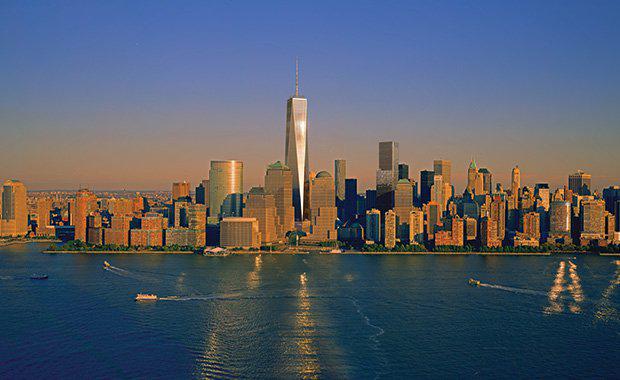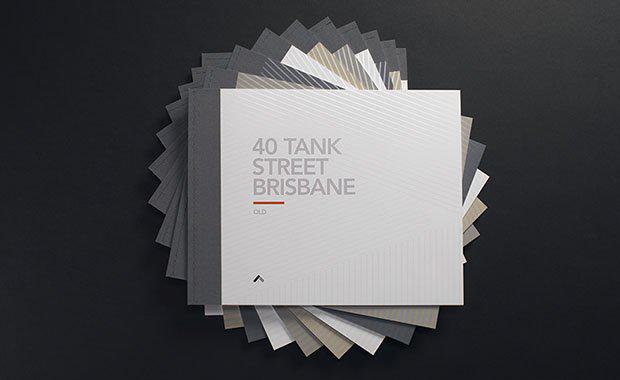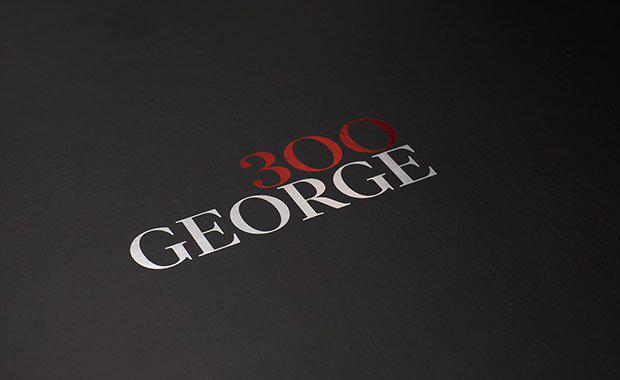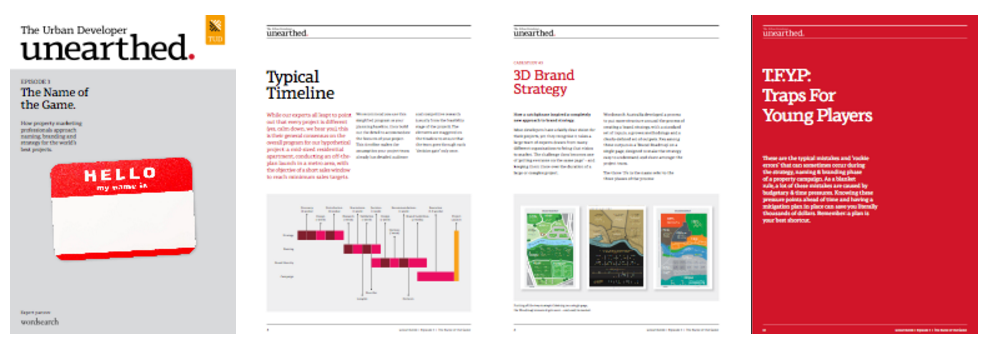Here’s how the experts develop naming, branding and marketing strategies to put their property projects on the world stage.
If you are wondering when you should get started with the naming and branding of your project, Tim O’Connor of JLL has the short answer for you: start working now.
“When it’s done late, the identity gets confused and the messages can get confused in the market. As a result, the effectiveness of the naming and the branding can take longer to become apparent.”
In his role as International Director, Head of Office Leasing for Australia, O’Connor advises developers in the very early stages of planning for many of the region’s largest commercial projects. As much as he likes getting out in the market and talking with occupiers, he’s a big believer in the value of strategic planning when it comes to creating a brand presence.
“You can come up with a name that might sound very impressive, but what does that name then stand for and how does that brand give a longer life span to the marketing campaign? You need to take a strategic approach to how you are going to develop that message for tenants over a longer period of time.”
You don’t have time for strategy. Or do you?
For developers and agents looking to move quickly to capitalise on market cycles, it can be tempting to take a shortcut and start picking colours and typefaces.
“It is absolutely worth the time to do brand strategy,” is the firm view of Gina McCartney, Executive Manager Marketing, Developer, APAC at REA Group.
“If you don’t do your thinking up front, you will be changing your creative half way through the campaign. It’s not just the logo or the branding that’s impacted by the strategy. It also informs your channel selection so making changes can create significant wastage with your media and advertising spend as well. Start with a really clear view of what will work, before you invest that money.”
“We like to come up with a brand strategy statement, because whenever we get into disagreements, I always pull out the brand strategy and say, ‘this is what we said we were going to do’,” advocates Adrienne Albert of The Marketing Directors, one of New York City’s leading property advisory firms.
“A brand strategy is a very effective tool for managing the process. Sometimes you come up with a solution that is even better, or maybe the market has changed or a competitor has launched something unexpected. So there are times when you need to amend the brand strategy, but at least if you have it to refer to, it keeps the subjective arguments in check.”
“Developers are creative, visionary people – almost by definition – and they often come to us and say ‘We know what we’re doing, we just need to get everyone on the same page’. So we ask to see the page,” explains Barrie Seppings, Director of Creative Strategy at Wordsearch.
“The reality is that there are usually many different interpretations of how a development should appear to the market, even within relatively small teams. So we developed a solution, a strategic process that collects those interpretations and distils them into a brand strategy that can be visualised on a single page as an infographic. Having a clear roadmap for the brand is an incredibly powerful tool for the project team.”
Knowing where to start is half the skill
“My advice would be to develop the strategy first based on an intimate picture of the target audience - everything from what they eat, what sort of movies they would go to see, who would they invite to dinner,” says McCartney of REA.
“You need a really clear understanding of your audience and their needs and wants, plus a really clear understanding of the competitive market. You also need to manage the stakeholder feedback around the strategic processes, so you understand what the internal drivers are.”
That stakeholder alignment piece is critical, particularly for large teams running complex projects over significant timelines.
“Every group creative process will generate disagreements, so our job is to draw those out before we get anywhere near production,” explains Seppings.
“It’s far cheaper to have an argument between stakeholders in a conference room with post-it-notes, than in a helicopter with a film crew. Our strategy workshops encourage teams to thrash it all out, reach consensus, draw up a roadmap and roll into production with the confidence that comes from having a clear direction and executive sponsorship.”
What’s in a name?
Naming buildings is still something of a dark art and can often become a very subjective decision-making process, but there are techniques to make the process more structured, particularly for mixed-use developments.
“Either you are going to have a cascading structure that leads with a single name or you can follow a branched approach, which allows for discreet silos for each individual asset,” advises Jack Stiller, Director of Wordsearch Singapore.
“Both have their place, but you should see what the outcomes of the brand strategy are before you start trying to develop a name, because the strategy gives you the toolset to analyse those names.”
The changing tenant mix in commercial developments, making it even more difficult to land on a name with universal appeal.
“The old days of having a brochure with a big photo of the building and a line saying this is the tallest building in wherever are over,” says JLL’s O’Connor.
“It’s now a much more complex proposition. You have to start by looking at the audience, what their drivers are, what the competition is doing and then building up to get to a name. What does the building say about the organisation who’s committed to moving in? There are a whole bundle of things that sit within that story, around sustainability, around the technology, all of those things become brand touch points. The name alone can’t communicate all those things. That’s where identity and brand strategy come in.”
“We look at all the things a developer or a sales agent might want to say about a project and consider each one of them to be a story in a book. We use brand strategy as a kind of bookshelf, organising all these stories, grouping them together in similar categories and making them easily accessible,” says Seppings of the 3D Brand Strategy process.
“Most strategy is great thinking, but it’s trapped in a terrible user experience – endless slide decks and monstrous documents. A good brand strategy should contain clear thinking, but it also needs to be readily accessible, otherwise it is fundamentally useless to an organisation.”

How do you tell the world you’re back in business? By creating a confident brand that’s all about business. Image: WordsearchA strategic approach to naming can often yield a result that appears unexpected, yet proves to be completely logical.
“When we were tasked with branding the first tower at New York's redeveloped World Trade Center, the public nickname of 'Freedom Tower' had got a lot of press and traction,” explains Stiller.
“The developer wanted to move the conversation on from ‘America’s response to 9/11, to one of commercial truths. The selected name ‘One World Trade Center’ and tagline ’The Best Office Address in the World’ allowed the memorial to commemorate the tragedy and the tower to shine as a place where people felt like commercial success could occur again, where enterprise would happen.
It is here that part of America’s response to 9/11 has been formed, with a resumed focus on business and prosperity at one of the worlds most iconic developments.'
Going beyond the logo – where does branding end?
Our panellists were all quick to point out that choosing a great name for your project is not the end of the branding process, it’s just the beginning.
“Brand thinking extends to every touch point of a project. Whether that’s an ad on Facebook or how the agent greets you when you walk into the display suite, if that message isn’t consistent or doesn’t make the buyer feel a certain way, it might not be a strong enough driver in a competitive market,” explains Lauren Kennedy, National Manager of Marketing Communications for Colliers International.
“That’s why it’s really important for the agency to be involved and to nurture that process, because if purchasers are looking at a high end product, they want to feel a certain emotion towards that product from start to finish.”

There are now more elements to consider when starting to build a brand. Make sure you have all the pieces before you start. Image: 3D Brand Strategy®McCartney from REA also advocates taking a wider view of branding.
“The experience side of brand is absolutely critical. You can do so much with marketing and advertising, but if a buyer walks into the display suite and doesn’t have an equally sophisticated experience as they had when watching the film or engaging with the on-line campaign, you’ve potentially lost them.”
Does everything need a strategy?
While brand strategy in general gets a big thumbs up from the panel, a few of our experts also see value in developing specific strategies for certain components of your branding.
“The digital space offers so much opportunity, but you do have to have a plan. The creative branding we’re putting ‘on domain’ is going to be very different to what we put on social,” says Kennedy.
“We have multiple target markets within one building, so whilst the overall branding and messaging is consistent, we are still tapping into different lifestyle elements of the brand to appeal to different audiences.”
“I think you have to deal with digital differently,” advocates Albert of The Marketing Directors.
“In print you have a certain amount of space which you may not have digitally. You may not have the space to be able to fully execute your brand the way you want it to be, so you have to be a little bit sensitive to the medium that you are using and how your brand can translate into it.”

Don’t underestimate the power of branding in the investment market. People rely on trust as much as they do on figures. Image: Wordsearch/JLLWhile the use of ‘lifestyle branding’ to attract residential owner-occupiers has become more sophisticated, it appears investors are still being given a more rational sell. That’s a missed opportunity, according to McCartney.
“I think branding becomes more important with investors. Not necessarily the emotional part of branding that’s about creating a desire to live there, but rather to make a purchaser feel safe and to trust the development. Brands have different types of emotional drivers, and I absolutely think that brand credibility and brand equity are key to driving investors’ decision-making.”
How does your brand translate?
With Chinese buyers having such an impact on so many markets, we asked Wordsearch China Directors Charles Peace and Candy Liu to give Unearthed the update on branding to appeal to a Chinese audience.
“Certainly there are things that people like and don’t like and that’s the same with every culture. That’s why certain things in Chinese just don’t feel right or they rub people up the wrong way,” says Peace, who has spent 16 years in the region.
“So I can give you explanations for each component of that phenomenon, such as the way number 4 sounds a little bit like the word for death, which is not the nicest thing to have written on the front of your apartment. Certain other things like the associations with black and red are, again, cultural things, but remember we often assign meaning to colours in western culture, gender for example. With any culture, they are things to be aware of, but there is certainly no ‘allergic reaction’ to certain colours in China, for example. It’s often overplayed.”
One area where brands often fall down the cross-cultural gap, however, is in the use of language.
“Translation is converting one language into another language, you can do that with Google translate in a millisecond, and it does a very good job. Interpretation is talking to somebody who knows the subject and can explain it correctly,” says Liu.
“So our goal is to create copy that expresses the same intent as the other language and that may mean that it’s written in a slightly different way to take into account linguistic issues and cultural issues. It may not be a direct literal translation but the critical thing for us is to make sure we are expressing the same information in a way that the reader will understand within their culture.”
Interestingly, language can be a trip-hazard in the west as well. “We learned a long time ago, even though New York City is an international market place, not all US customers can pronounce foreign words correctly,” explains Albert of The Marketing Directors.
“Put yourself in the shoes of that target market: if they can’t say it, they are not going to remember it. If they are not going to remember it your branding efforts are diminished.
Liu’s pro-tip for creating dual-language material to cater to different markets within one publication: “Don’t make one language smaller or less prominent than the other. It shows a lack of respect.” That’s a bad look for any brand.
Don’t forget your ‘house brand’ either
If you think you’ve been noticing an increase in the time and effort developers are spending on their own brand, over and above their individual project brands, you’re absolutely correct. And it’s not a vanity thing.
“We’ve just undertaken new research* which shows 80% of new home intenders believe the developer brand is just as important as the development itself,” says McCartney of REA.
“What that tells us is that the credibility around what the developer stands for, what they believe in and their value system as a company is now really important to consumers. Not only is there a shift towards more brand advertising from developers, but also consumers are actually telling us they are hungry for that content and information.”
It’s a message that gets a lot of support from the agent community as well.
“I think buying from a trusted developer has become increasingly important to most people in the resi market,” says Kennedy of Colliers International. “So those developers who already have a strong brand can harness that equity and continue to grow. My advice to those who are perhaps newer to a particular market is to make sure that you are communicating your brand and what you are about.
The market wants to know and have confidence in who is behind the project.’
The business case for investing in brand.
So how much can brand influence the perceived value of a building? The answer is probably best demonstrated by the behaviour of some of the biggest brands in the market – the global organisations that take the majority of space in our newest commercial developments.
“I think commercial markets have, for so long, been fixated on attracting financial and professional services as tenants and so the positioning of buildings was more geared towards being a traditional luxury brand,” explains JLL’s O’Connor.
“What’s happening now is you have tech as a target audience but also, because of the way tech has been able to attract younger, better talent, it’s forcing other organisations to think about the way they want to be perceived. We constantly hear of organisations now wanting to be seen less as a bank, for example, and more as a tech company with a specialisation in banking. And they are using their choice of building to help send that message to the talent market.”

The lines between development types are blurring, meaning brands now need to accommodate multiple messages. Image: Shayher GroupO’Connor believes the effect on branding for commercial space will be profound.
“I think we are already seeing the naming and positioning of buildings are being influenced by this focus on talent. Companies are making property decisions that are very much driven by their own brand and their people. I think that’s always been true to an extent, but organisations are probably making that statement more clearly, being more vocal about it.”
Each market brings its own branding challenges, as Albert explains from her office in Manhattan.
“You have to have patience with any branding effort, it takes a while for the brand to gain traction. We have a different kind of situation due to our zoning, where developers are now building two towers on the same site, but it is rare that you are going to build two towers at once, there’s too much product entering the market. So the issue then for the brand is how to bring the second tower on, making it feel new and fresh and different, whilst still maintaining the fact that it’s part of the same project as the first brand. That is a big challenge in this market.”
“I say: no branding, no long term profitability.” REA’s McCartney pulls no punches when it comes to making the investment case for branding.
“If you look at the most successful brands, and the obvious example is Apple, people are prepared to pay a premium for that product no matter what. There’s no discounting in the market. And they will never lose hold of that positioning as long as the customer has loyalty to that brand. That’s a key message for branding and the role branding will play, consumers don’t have an emotional loyalty connection to a product, but they have loyalty to a brand. So if the developers are targeting repeat purchasers or they are trying to drive loyalty amongst their own customer base, brand becomes a really critical piece of that puzzle.”
What’s your ‘crystal ball’ strategy?
“The more competition there is amongst the developers, the bolder they are going to have to be in order to generate maximum value,” says Stiller from his office in Singapore, a city that has made an artform out of delivering the future.
“I think if you look at the big fashion houses of the world and how they run a portfolio or stable of tiered brands, I think developers are going to have to start doing the same thing.”

The future is here, if you know where to look. Our panellists point to Asia as the next source of inspiration for our cities. Image: Wordsearch
“We are definitely going to see a lot more mixed use development in Australia, which follows what we’ve seen in Asia, so the name and the brand have got to cope with a lot more different uses within a precinct or even within a building,” says O’Connor, whose extensive experience in Asia included work on the iconic Taipei 101 building.
“Having an overall brand and then a set of sub-brands that sits under that umbrella to convey the different elements, blurring of the lines between work and leisure, which is the new reality of the workplace now.”
“Perhaps it because we’re in New York which, like Sydney, is an international city, but I think we’re moving towards a global community,” says Albert.
“The internet has been instrumental in that and there are really no boundaries any longer. So in terms of branding, I think we are going to have to align more with imagery than words. Because the words may not translate, but the image will.”
This transfer of ideas across the globe is about to heat up even further, according to Peace in Beijing.
“We are going to see Asian-style, particularly Chinese-style mixed use property developed by Chinese developers all over the world. That’s because they are getting very skilled at anticipating changes in demographics and the way that people live. China in many regards is well advanced in terms of the online economy, your whole life is on the phone. And, I think that Chinese developers are well aware of what’s coming next, so you are going to see the type of developments that are prevalent in China start to appear all over the world. If you ask me about whether brands here are becoming more Western, I would tell you to get ready for something quite different, possibly the opposite. I think we are going to start to see Chinese real estate brands becoming well known internationally.”
*REA Consumer Journey Research September 2016
Download Your Complimentary Copy Here.

Thanks to our global panel of Unearthed experts for this episode:

Lauren Kennedy
is the National Manager of Marketing Communications for Colliers International with experience across property marketing, digital marketing, sales, customer service and project management. Her previous roles have included technology start-ups and capital markets roles within commercial property.

Candy Liu
is a Director of Wordsearch China, with an MA in Marketing and Management and an MBA from Roehampton University in London, Candy joined Savills’ Beijing office in 2005 as Project Manager before moving to Wordsearch China as a business partner in 2009. Candy has since worked with numerous international and domestic developers, owners and investors, including, LG, Wanda Group, R&F, Goldman Sachs and Hines.

Gina McCartney
is Executive Manager Marketing (Developer APAC) of ASX-listed REA Group, responsible for marketing strategy, research, go-to-market and sales operations. Prior to joining REA Group, Gina spent over 15 years defining, managing and implementing Brand, CRM and Digital strategies for global and local businesses across the automotive, financial and retail sectors.
rea-group.com

Tim O’Connor
is the Head of Office Leasing for Australia, International, a Director of the Firm and member of JLL’s Global Leasing Board, responsible for driving the growth of Jones Lang LaSalle’s leasing services across Australia. Tim’s team of 60 leasing professionals helps Australia’s biggest property owners and occupiers find commercial real estate leasing solutions.
jll.com.au
Charles Peace
is a Director of Wordsearch China, with over 17 years experience working in real estate and architecture, the past 12 of which have been in China. He has considerable international experience having worked on behalf of property developers on a variety of large-scale developments: from high-end residential projects to super-tall commercial and mixed-use schemes around the world.
Adrienne Albert
is recognised as one of the foremost marketing and sales experts in residential real estate in North America. With her firm, The Marketing Directors, Ms. Albert has been personally responsible for the marketing and sales of over $30 billion in residential sales over the past 30+ years, serving dozens of clients on a wide range of projects, from single family homes to high density multi-use developments, in locations from Canada to Mexico, New York to California.
Jack Stiller
is a Director of Wordsearch Singapore, having moved to the city state from the firm’s London headquarters in 2013. Jack’s portfolio of projects spans more than four continents and 20 countries, and includes some of the worlds most iconic tall buildings, such as The Shard in London; Masdar City in Abu Dhabi; and a selection of Singapore’s modern architectural landmarks including, CapitaGreen, Marina One, Duo and Paya Lebar Quarter.
Barrie Seppings
is the Director of Strategy at Wordsearch Australia, part of the world's leading specialist property marketing consultancy network. He helps architects, developers, agents and city leaders develop stories for the built environment.
Coming up: The ‘How To’ guide for naming, banding & strategy
If you’ve enjoyed hearing from our experts, stay tuned at the end of the month when we release our downloadable How To guide for developing great names, brands and strategies for your next property project. Available as a downloadable PDF, this Unearthed ‘How To’ guide will walk you through the timelines, budgets, strategies, collaborators and ideas you should be considering as you plan the identity of your next development project.
About the Guest Editor
Sarah Virzi is a Senior Delivery Lead at Wordsearch, with over 5 years experience and leadership with the Property and Design sector. She has worked with the world’s leading brands across Australia, the US and Asia.
About the Publishers
The Urban Developer
is Australia’s largest and fastest-growing online community for development professionals. Their daily updates are read across the industry and their live events and panel discussions are highly sought-after. The Unearthed Series is the first of an expanding range of resources for development professionals, published by The Urban Developer and developed in collaboration with the world’s most experienced property professionals.
Wordsearch
is the world’s leading network of property marketing specialists, with consultants, strategists, designers and managers in eight offices around the world. wordsearchaus.com.au
Talk to us
Ideas, comments or submissions to unearthed@theurbandeveloper.com
Unearthed takes you inside property marketing.
What technologies should I use? How do I find the right team? When should I brief my designer? How much budget should I allocate? We’ve covered the globe, talking to experts from developers to branding consultants, architects to sales agents, and technologists to designers, bringing you the latest thinking and tested wisdom from the world’s best property marketers.
Each monthly episode of Unearthed shows you the trends, takes you behind the case studies and offers the inspiration to help you raise the bar on your next marketing project. Unearthed: It’s what’s really happening inside property marketing.
See the full series of Unearthed here.
















